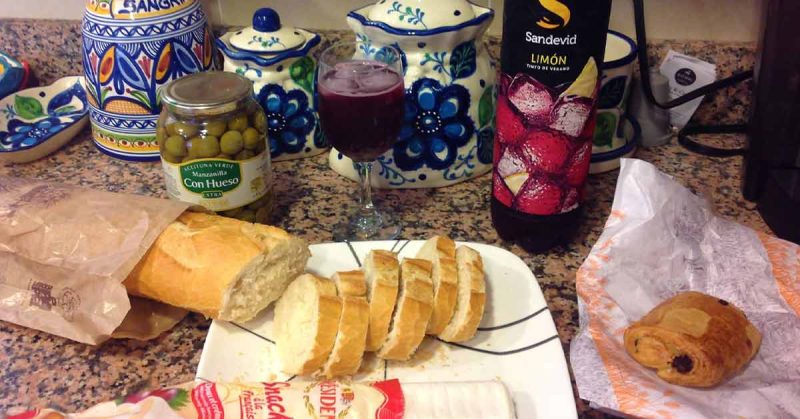There’s a running joke among military families that they joined the military to “see the world,” but the parts they ended up seeing were never on their wish list! This is partially true for my family. My husband joined the Marine Corps, and because of his career, this girl, who grew up in a small town, has spent the last two decades living mostly in coastal communities. The Pacific coast of California, the Gulf Coast of Mississippi and the Atlantic coasts of both North Carolina and Spain.
The military challenged me to live in places I had never visited before. Typically, when he came home with new orders, I knew nothing about the area and had to immediately begin doing research. I have found that one fun way to learn about a region is through its food. Whether I looked up recipes to practice in advance or waited until we arrived to explore local restaurant specials, tasting new dishes always helped us feel more comfortable and familiar in a new place.

To inspire you in your exploration of regional flavors, here is a culinary tour of the places the Marine Corps sent us.
- Virginia: The first duty station of our marriage was not far from where I grew up and had plenty of familiar chain restaurants. The new foods came from meeting international spouses who shared their traditional recipes. This was the first place I tried pancit and lumpia — popular Filipino dishes served at parties in enormous quantities. Pancit is a noodle dish with meat and veggies mixed in. Lumpia are fried egg rolls, stuffed with a flavorful meat mixture. I have made new international friends at most of our duty stations, and I always love trying their favorite foods!
- North Carolina: We spent three years at Camp Lejeune, near the Atlantic Ocean. I had rarely traveled this far south, so Southern comfort foods like chicken and waffles, grits and buttermilk biscuits were new to me. I knew I liked seafood, but had never seen it so fresh. We used to buy shrimp on the side of the road, out of coolers, from fishermen who had caught them that morning. Fresh shrimp are sold whole, with heads and tails! I learned how to peel them and that cooking the heads makes excellent stock.
- Spain: We were lucky to be stationed in Rota, Spain, for three years. It’s a small town on the southwest Atlantic coast of Spain. There were countless new foods and dishes to try. We enjoyed going to local restaurants to sample tapas dishes (little appetizers), or paella, which is a fancy rice dish cooked with assorted seafood and vegetables. One surprising thing we learned is that Spanish food is not like Mexican food: the Spanish use almost no spice, and little seasoning besides paprika and peppers. They use very fresh, flavorful local ingredients. I brought my Spanish/English dictionary to the local produce stand or to the town’s fish market to get dinner. Eventually, I learned to buy whole fish, ask for it to be cleaned and scaled, then figure out how to cook it after I got home! I have enjoyed exploring Spanish recipes (in English) and still make special Spanish dishes for my family when we are celebrating something.
- California: I had heard people rave about the wonderful food in California, and I didn’t understand the hype until we lived there. We spent five years total in Southern California, at two different duty stations. There is a tremendous variety of ethnic restaurants, and plenty of fresh, farm-to-table dishes. I fell in love with avocados (yes, they really are fresher and more flavorful there) and with fish tacos. When I was a young mom, a friend who had been stationed in California was talking about fish tacos, and I commented that I sometimes made my kids fish tacos from frozen fish sticks. She was appalled, and I finally understand why. California fish tacos use grilled white fish like mahi mahi, with fresh salsa, crumbled cheese, and of course, guacamole. They are time-consuming to prepare, but worth the effort!
- Mississippi: Our final duty station was Gulfport, about an hour east of New Orleans. This is Cajun territory, so I quickly learned the difference between gumbo and jambalaya. (Both have shrimp and a spicy tomato-based sauce, but gumbo is more like a soup with some rice on top, while jambalaya has rice cooked into the dish.) A po’ boy is a sub sandwich of French bread, often filled with fried seafood. We enjoyed going to local cafes to get beignets — fried dough with a big pile of powdered sugar on top. Yum!

Everyone’s military journey will be different, so the list of places where you have lived may look very different from mine. Wherever you move, I hope you’ll expand your culinary tastes, trying new foods and recipes that will become your family’s favorites!





